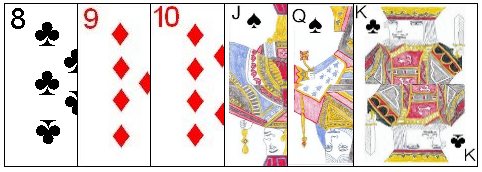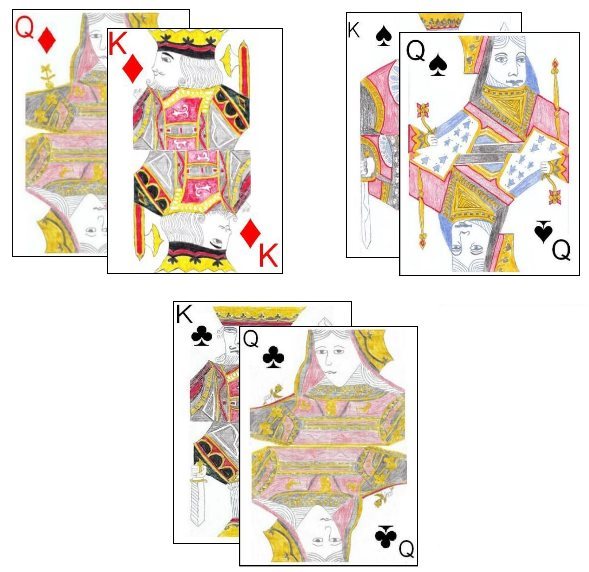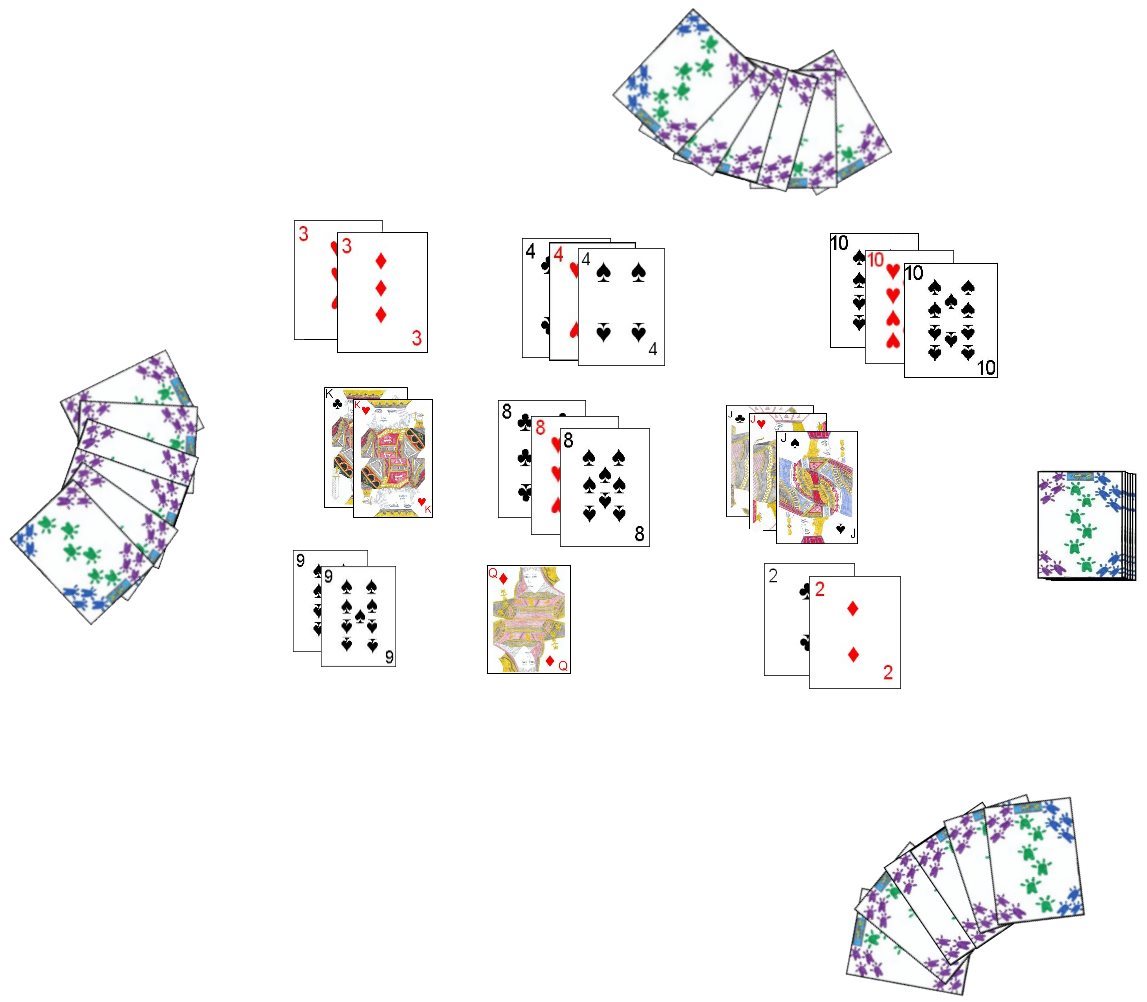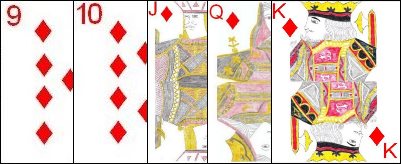| Meld Name | Description | Score |
|---|
| Sequence | Six cards in direct sequence but not all in the same suit
| 20 |
| Flush | Six cards all of the same suit, not in sequence | 30 |
| Sequence Flush | Six cards in direct sequence, all of the same suit | 50 |
| Assembly | Five cards of the exact same rank. The score earned is dependent on the rank of cards making up the assembly
| Dependent on suit:
- 2, 3, 4, 6, 7, 8, 9, 10 - 100 Points
- Ace, 5 - 110 Points
- Jack - 120 Points
- King, Queen - 130 Points
|
| Marriage | One King and One Queen of the same suit. A player may not meld a Marriage and another type of meld on the same turn. However the player may (and should) meld multiple Marriages on the same turn. The points earned are dependent on the number of Marriages melded on the turn. A player may meld Marriages using any combination of cards from his hand and the discard piles of Kings and Queens, however at least one card from one Marriage melded must come from the player's hand. All cards used in the meld, both from the player's hand and the discard pile are then set aside in the face down waste pile, not to be used again. The player, on the same turn does not make a regular discard this turn. At the completion of his turn, he then draws enough cards from the discard pile to replenish his hand to six cards.
| The score earned is dependent on the number of Marriages melded on the same turn:
- 1 Marriage - 10 points total
- 2 Marriages - 30 points total
- 3 Marriages - 60 points total
- 4 Marriages (Quadruple) - 100 Points total
- 5 Marriages - 150 points total
In addition, for each Marriage that is formed in the duplicated suit (called an Imperial Marriage), the player scores an additional 10 points. This does not apply to the score shown for Five Marriages, since this bonus is already calculated in the score shown.
|
Copyright © 2015 CatsAtCards.com. All rights reserved.





